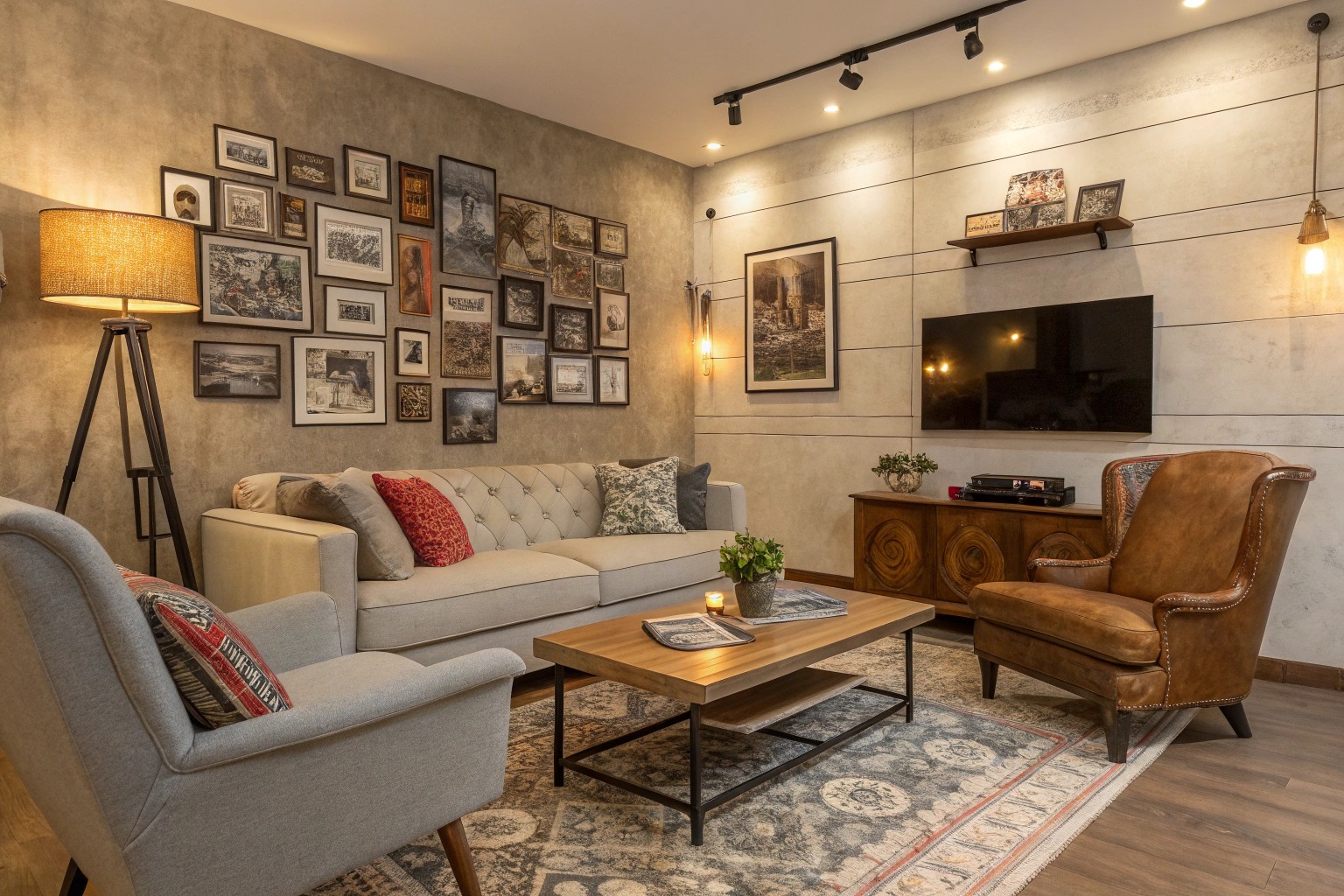There’s something magical about stepping into a space where past and present coexist in harmony. Vintage and antique items bring warmth, history, and character to contemporary interiors in ways that mass-produced items simply cannot. As someone who designs both gardens and interiors, I’ve found that these timeless treasures transform ordinary spaces into extraordinary ones with rich stories to tell. This guide will walk you through the journey of sourcing, restoring, and integrating vintage finds to create spaces that feel both fresh and deeply personal.
Understanding Vintage and Antique Styles
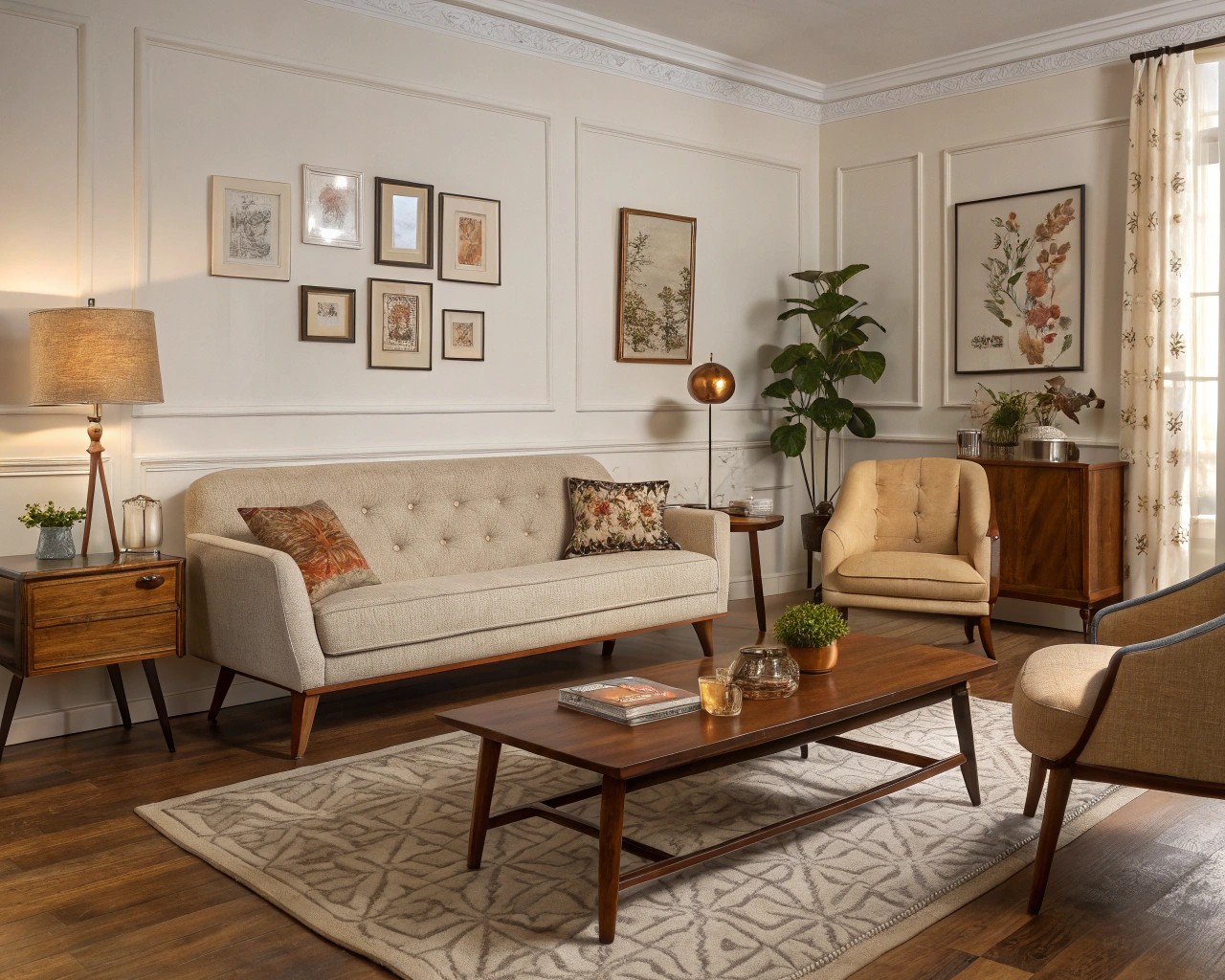
Before diving into the world of vintage collecting, it’s important to understand the terminology. The term “vintage” typically refers to items that are between 20-100 years old, while “antique” traditionally describes pieces that are over 100 years old. Popular vintage decor usually dates between the 1920s and 1950s, though these definitions continue to evolve.
Identifying Your Vintage Aesthetic
Finding your personal vintage style is crucial before you start collecting. When working with clients, I always recommend these steps:
- Look through old interior design magazines or Pinterest boards for inspiration
- Identify your favorite decades and design movements
- Take inventory of what you already own that fits your vintage vision
- Consider mixing different eras carefully to create interest without chaos
Understanding what speaks to you will make your vintage hunting much more focused and successful. This foundation helps ensure that each piece you bring home contributes to your overall vision.
Popular Vintage Styles and Their Characteristics
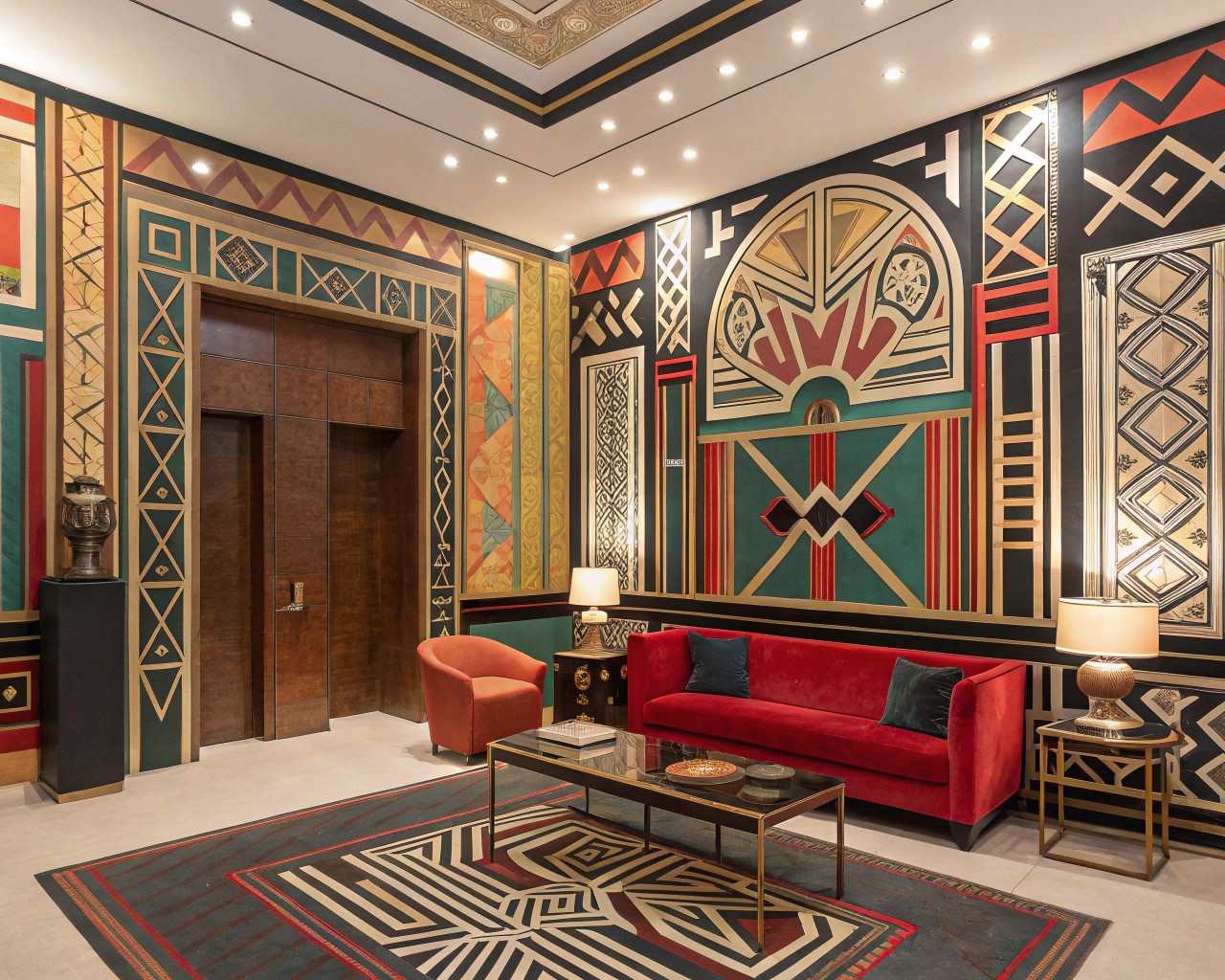
| Style Period | Key Characteristics | Common Materials | Typical Items |
|---|---|---|---|
| Art Deco (1920s-1930s) | Geometric patterns, bold colors | Chrome, glass, exotic woods | Cocktail cabinets, mirrors |
| Mid-Century Modern (1940s-1960s) | Clean lines, organic forms | Teak, walnut, molded plywood | Eames chairs, sideboards |
| Victorian (1830s-1900s) | Ornate details, rich textiles | Mahogany, velvet, brass | Button-tufted furniture, ornate mirrors |
| Farmhouse/Rustic | Weathered finishes, practical designs | Reclaimed wood, wrought iron | Farm tables, wooden crates |
| Industrial | Utilitarian designs, raw finishes | Metal, steel, salvaged parts | Factory lighting, metal storage |
Sourcing Vintage Treasures
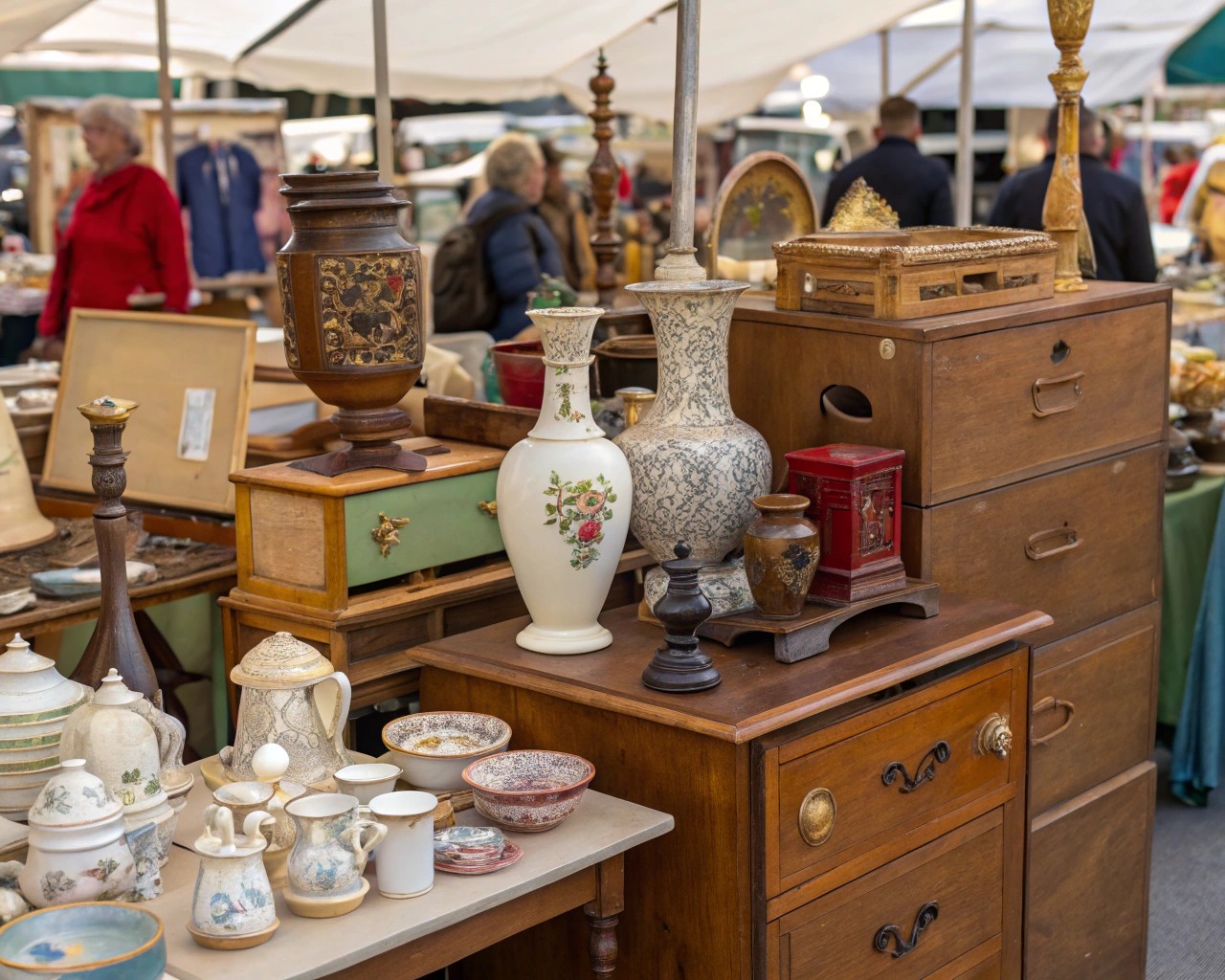
Finding quality vintage pieces is half the fun. While online shopping has made vintage more accessible, nothing beats the thrill of discovering a hidden gem in person.
Where to Find Vintage and Antique Items
- Estate sales and garage sales: These can be goldmines for unique furniture, artwork, and accessories at great prices
- Local antique shops: Though prices may be higher, dealers often curate high-quality, authentic pieces
- Flea markets and antique fairs: Events like those in Newark, Nottinghamshire (Europe’s largest), offer extensive selection
- Architectural salvage yards: Perfect for vintage doors, mantels, or light fixtures
- Online marketplaces: Etsy, eBay, Facebook Marketplace, and Chairish offer convenience
- Family heirlooms: Don’t overlook treasures that might be in your family’s attics or basements
When sourcing furniture, maintaining an open mind is essential. As designers Joe McGuier and Megan Prime of JAM Shop note, “Sourcing for vintage furniture is full of surprises and unknowns. We like to go in with an open mind, and we’re never disappointed!”
Evaluating Quality and Authenticity
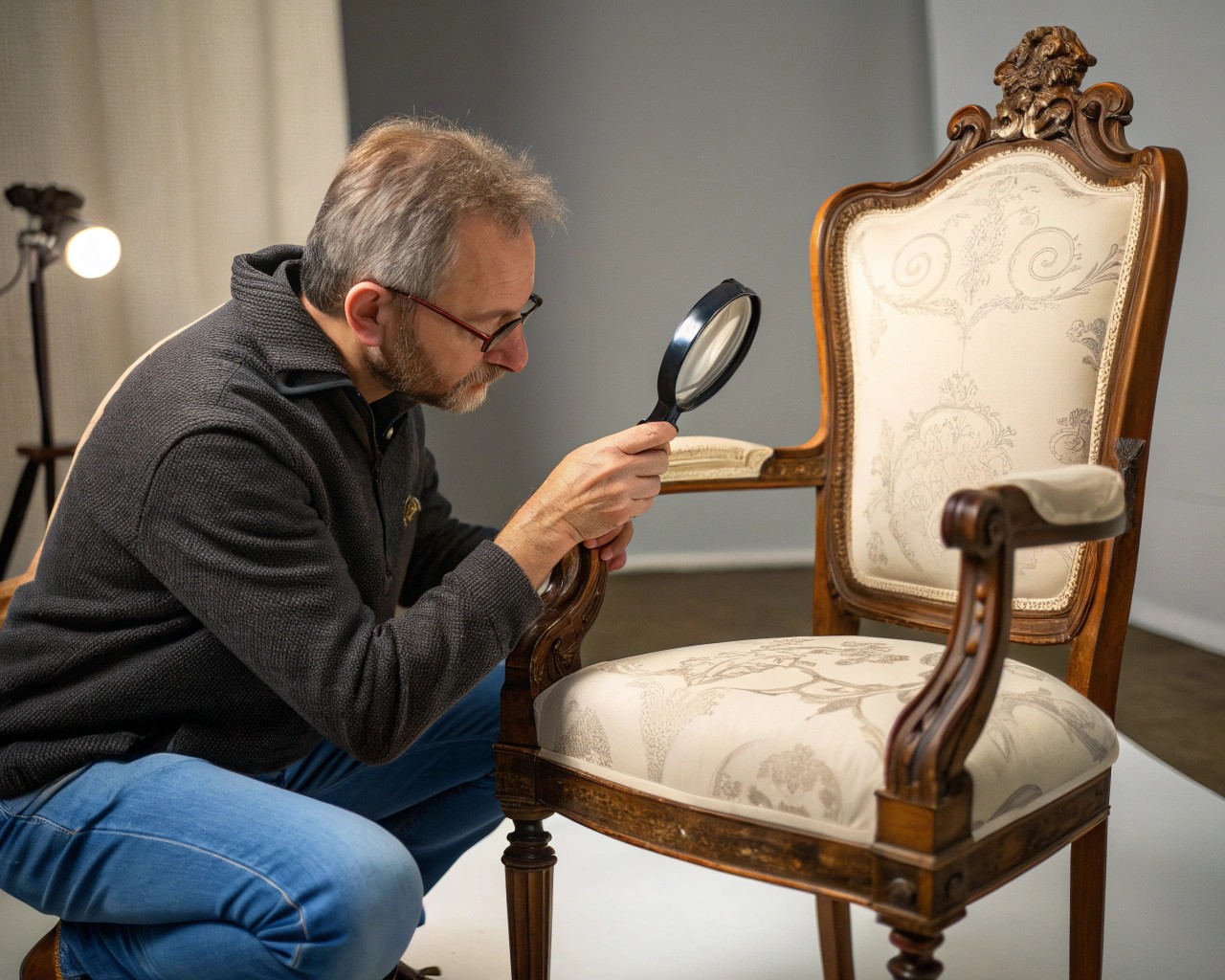
Before purchasing, carefully inspect pieces to ensure they’re worth bringing home:
- Check for solid wood construction rather than particleboard or MDF
- Examine joints and hardware – dovetail joints, mortise and tenon construction, and original hardware indicate quality craftsmanship
- Look for maker’s marks or labels to help identify the maker and age
- Assess condition – while some wear adds character, avoid pieces with major structural issues, mold, or pests
- Work out what era it was made in and identify materials and finish (sellers may help with this)
Remember that patina—the natural aging of materials—can add value to vintage pieces, so don’t be too quick to dismiss items that show their age.
Restoration and Revitalization
Once you’ve found your vintage treasures, you may need to restore them to their former glory. The key is finding the balance between preservation and refreshment.
Preserving the Patina

Wooden antiques develop a natural darkening called patina over time, and removing it can reduce a piece’s value. Stripping and sanding should only be done if absolutely necessary. Often, a good clean and polish can transform furniture without sacrificing its historical character.
DIY Restoration Techniques
For those ready to tackle restoration:
- Thorough examination: Check over the whole piece, removing dust and cobwebs as you go. Take out drawers, note broken parts, and carefully remove hardware
- Cleaning: Start with gentle methods before moving to stronger solutions
- Repairing: Address minor damage with wood glue before cleaning, as this makes repairs less obvious
- Refinishing: Only when necessary
- Updating: Simple changes like new hardware or fresh upholstery can make a huge difference without compromising integrity
When working on vintage garden pieces, I’ve found that taking before and after photos helps track your progress and document the transformation. This can also help you remember your process for future projects.
Integrating Vintage with Contemporary
The true art lies in blending vintage pieces with modern elements to create spaces that feel collected rather than contrived.
Design Principles for Successful Integration
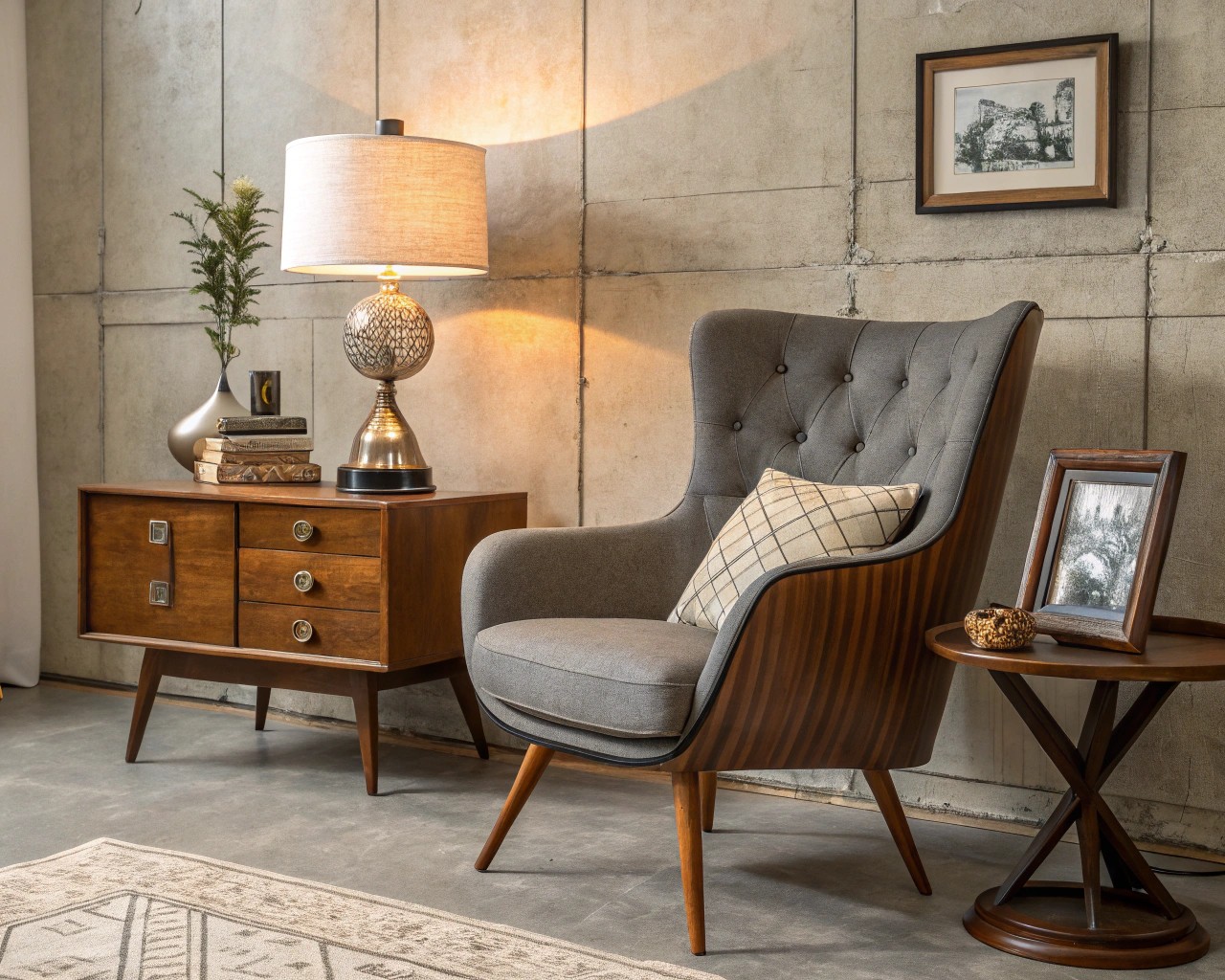
Balance Scale and Proportion
- Ensure vintage pieces are proportionate to your space
- Pair oversized vintage items with sleek, low-profile modern furnishings
- Avoid overcrowding smaller areas with large antiques
Create Continuity with Color
- Establish a unifying color palette to bridge vintage and contemporary elements
- Consider reupholstering vintage furniture in modern fabrics like bouclé or velvet
- Use paint thoughtfully to tie pieces into your scheme
Layer Textures for Dimension
- Mix the natural patina of vintage wood or metal with smooth contemporary surfaces
- Consider layering patterns and fabric materials to create texture throughout your home
- Use vintage textiles like patterned quilts, floral curtains, or striped accent chairs to add warmth
Focus on Functional Styling
- Repurpose vintage items in creative ways
- Transform antique trunks into coffee tables or vintage consoles into vanities
- Ensure vintage pieces serve a practical purpose in your space
Avoiding the “Museum Effect”
To keep your home feeling lived-in rather than like a museum exhibit:
- Limit the number of vintage statement pieces in a single room
- Mix vintage decor with contemporary accessories
- Incorporate modern lighting alongside vintage pieces
- Blend finishes and materials, mixing distressed wood with polished metal or aged brass with glass
You can achieve the ultimate vintage style by mixing authentic vintage items with new decorative pieces that give off an old-world vibe. This balanced approach ensures your space feels curated rather than dated.
Vintage in the Garden
Vintage elements add particular charm to outdoor spaces, creating gardens with a sense of history and permanence.
Designing a Vintage-Inspired Garden
To create a garden with vintage charm:
- Arrange plants in a soft, asymmetrical manner rather than rigid formal layouts
- Create more than one focal point throughout the garden space
- Consider sectioning parts of the garden to create “secret” spaces
- Choose natural, softer-looking blooming plants for a romantic feel
- Aim for a slightly overgrown effect to enhance the vintage atmosphere
A table seating area, a bench in a different spot and style, and a small antique sculpture, pond, or fountain can serve as perfect focal points in a vintage garden.
Incorporating Vintage Elements Outdoors
My favorite vintage garden elements include:
- Weathered garden benches or seating areas
- Antique urns or planters
- Reclaimed architectural elements like gates or trellises
- Vintage garden tools as wall art
- Repurposed items like old ladders for plant displays
For a balanced vintage garden aesthetic, mix structural elements with softer plantings. Use gravel pathways and stone walls alongside cottage-style plantings to create visual interest that reinforces the vintage look.
Styling and Showcasing Your Finds
How you display vintage pieces is just as important as the items themselves.
Small Vintage Touches for Big Impact
You don’t need large furniture pieces to incorporate vintage charm. Consider these smaller accents:
- Vintage mirrors to add depth and light
- Old books stacked on coffee tables or shelves
- Retro kitchenware for a nostalgic feel
- Framed vintage artwork or postcards
- Antique clocks, candlesticks, or vases as eye-catching accessories
These small details can make a huge difference without requiring a complete room makeover.
Creating Vignettes and Focal Points
- Let one or two vintage pieces take center stage and surround them with minimalist modern furniture
- Use vintage pieces as conversation starters in entertainment areas
- Allow statement pieces room to breathe with negative space around them
- A vintage chandelier looks stunning when contrasted with minimalist decor

